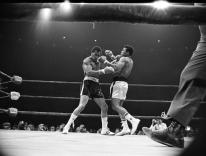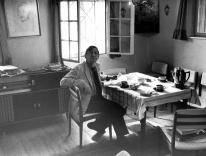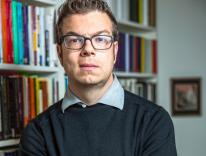Literary biography is perhaps the hardest genre to get right. Though spending lots of time in the archive is necessary, it isn’t sufficient. You need to turn this research—the lunch receipts and discarded drafts and report cards and love letters—into a compelling narrative; you need to present not just a sequence of events but a life, with its recurring motifs and central dramas, its rising action and sudden reversals. Likewise, though citing from the work is crucial, it’s not enough. You need to be a critic, able to tell us how the poems or novels or plays work, how they fit into the broader fields of literary and social history.
Finally, and most importantly, you need to have a theory of how the life and the work relate to one another. You can’t reduce the work to the life, but you have to show how the life informs the work. You can’t claim that biography explains any given poem or novel, but you have to show how the alchemical transformation happens.
There are so many ways to screw things up, and the list of those literary biographers who have screwed things up is long and venerable.
In fact, it almost seems a miracle when things do work out, when a literary biography leaves you understanding the artist and the art in a new and truer light. Hermione Lee did this in her recent biography of Penelope Fitzgerald; Lyndall Gordon did this in her life of T. S. Eliot; Edward Mendelson did this in his two-volume treatment of W. H. Auden.
Add to this list Langdon Hammer’s new book, James Merrill: Life and Art. Merrill was one of America’s greatest poets of the twentieth century, and this book has been a long time in the writing: I’ve been waiting for it since I first met Hammer eight years ago (he taught me in graduate school), and he’s been working on it for well over a decade. But the wait has been worth it. We now have the definitive treatment of Merrill, and it’s hard to imagine how future biographers will be able to improve upon Hammer’s effort. His readings of Merrill are judicious and intelligent, and his style is lucid, free of jargon and elegant in its own right.
Moreover, Hammer doesn’t just illuminate the life and the work and the relation between the two, though he does all of this. He also illuminates, among other things, the connection between art and privilege (Merrill was the son of Charles Merrill, the founder of Merrill Lynch); the gifts that rhyme and meter offered to one of the twentieth century’s great formalists; the reasons that Merrill, in his later life, obsessively used a Ouija board—and then transcribed its sometimes metaphysical, sometimes comical messages into his own verse; the life of a gay man living through the AIDS crisis; what a poet might find in writing a novel, as Merrill did in The Seraglio and The (Diblos) Notebooks; the list goes on.
Anyone who has read Merrill’s poetry knows a lot about his life already. He was rich, unbelievably cultured, and incredibly hard working. He had many lovers, many of whom appeared, by name or slightly obscured, in his verse: Kimon Friar, a translator who taught Merrill at Amherst College; Robert Isaacson, a scholar and art dealer; David Jackson, who Merrill would live with for the last forty or so years of his life; Peter Hooten, a young actor. Hammer turns all of these figures into fleshed out characters, men who Merrill loved and quarreled with and who came to figure, in ways big and small, in his poetry. As I say, Merrill’s readers have encountered many of these people and events before, but never in such a complete fashion (the book is over 900 pages) and never with such fresh, clear delineation.
What most impresses, though, isn’t Hammer’s command of the facts but the strength of his readings, both of Merrill’s life and of his poetry. Almost every page has a sentence that I wish I’d written: “For Merrill, truth’s only touchstone was personal experience as sifted by sensibility and expressed in style”; “Like Proust, he had chosen a way of life that was childless; not reproduction, but a return to his experience in writing, defended him against passing time—although there was no defense against time, he knew.”
Hammer’s reading of “Lost in Translation,” Merrill’s best poem, is especially sharp. The poem, which considers childhood and its many literal and figurative puzzles, is itself a puzzle, a mixed-up assemblage of biography and literary allusion and competing styles. Hammer leads the reader through the poem, moving between metrical and thematic analysis, reading earlier drafts against the final version, finally telling us that the “jigsaw puzzle is a model for the world in which, like a perfectly crafted poem, everything has its place.”
James Merrill: Life and Art performs the same kind of trick, showing how Merrill transformed the messiness of life into order and meaning. I can’t recommend this book more highly.
Please email comments to [email protected] and join the conversation on our Facebook page.
Share
Previous Story
Vatican ends LCWR oversight: No ‘oops’ in Latin
Next Story
Sensational, but Ineffectual


